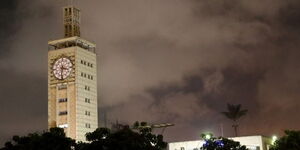On Sunday, Nairobi Governor Johnson Sakaja set the tongues wagging when he announced that he was removing the 25-floor cap on city buildings after consultations with President William Ruto's administration.
Speaking at a church service in Makadara, Sakaja explained that landlords would be allowed to construct buildings taller than 25 floors as the state prioritises the provision of affordable houses through which tenants can pay rent as a mortgage.
Hours later, Sakaja revealed that under a proposed area-specific zoning framework tabled in Parliament, some landlords will be allowed to construct buildings that go up to 75 floors.
The announcement, which was made in the presence of the Head of State, aroused chatter about the benefits and dangers of opening up the skyline to affordable residential housing projects.
Hong Kong Connection
In Hong Kong, the affordable housing project was developed in 1954 with the aim of giving people from poor backgrounds the chance to live decently at a lower cost.
The city embarked on the ambitious plan after a fire destroyed several shanty homes and the first affordable houses for the masses were delivered in the 1980s.
According to reports, the government heavily subsidised housing hoping to collect revenues through charges at car parks and shop fees.
Ever since, the population of the city has ballooned to over 7.3 million people forcing over 17,150 people to live per square mile.
The height of the houses set aside to cater to the rapid need for housing in the city also increased with a majority measuring between 60 and 80 floors.
Population pressure, however, continued pushing Hong Kong's housing market to the edge making the city the most expensive for real estate.
Experts estimate that it takes over 23 years for a standard household to dedicate its entire income on house ownership to buying and owning a home. On average, individuals in the queue for affordable houses wait for approximately six years for allocation.
The housing crisis led to the rise of 'cage homes' in which individuals are allocated a 400-square-foot flat on mezzanine floors of dilapidated buildings. Over 220,000 people live in those houses.
The city also suffers from an extreme wealth divide where the super-rich live in luxury condors while the poor are maligned and live in squalor neighbourhoods.

Former MP Dies News Just In











